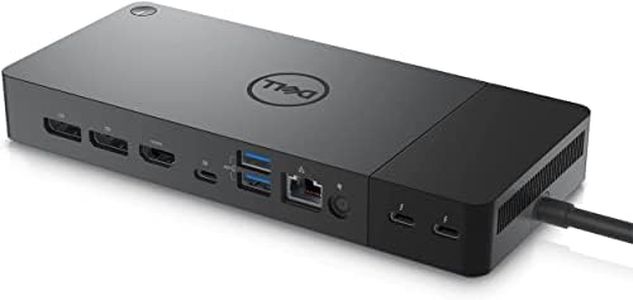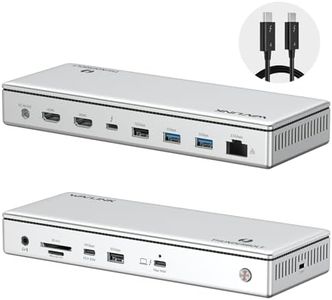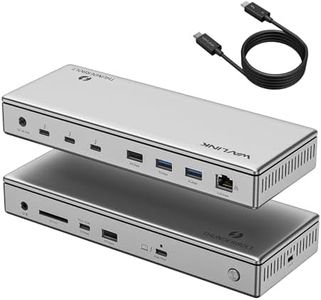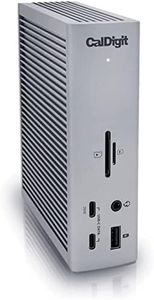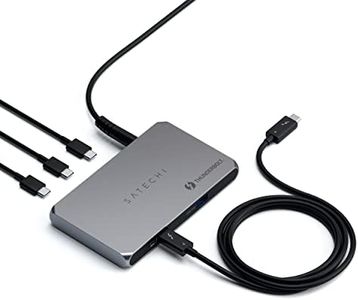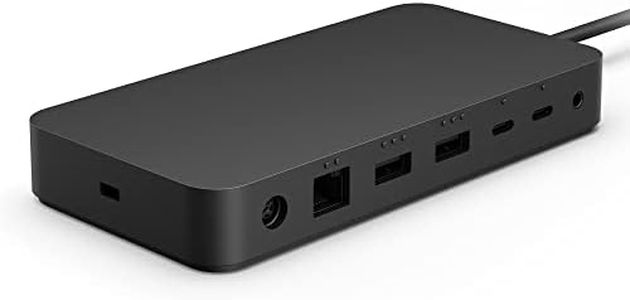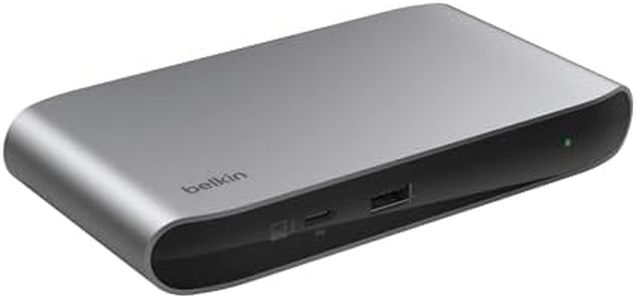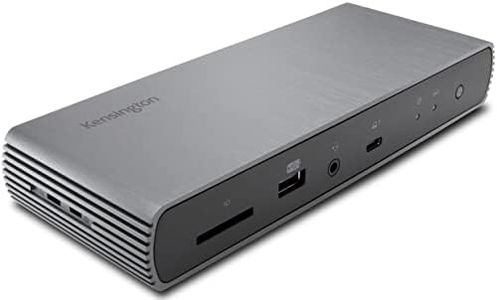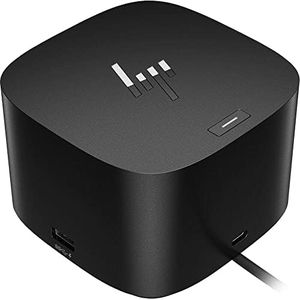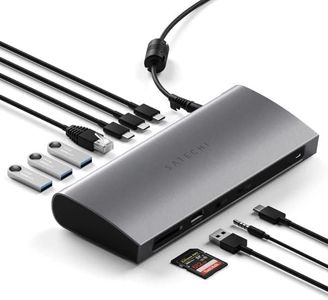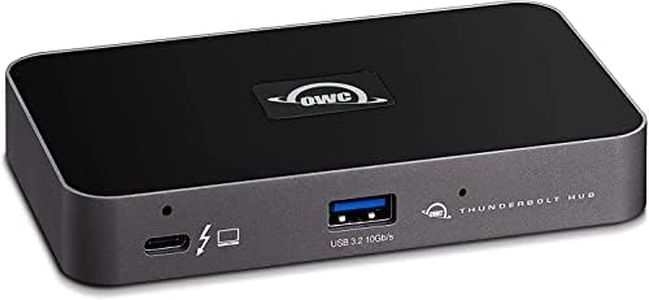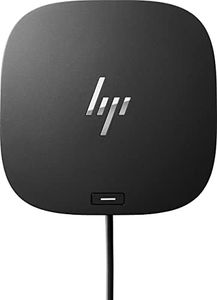We Use CookiesWe use cookies to enhance the security, performance,
functionality and for analytical and promotional activities. By continuing to browse this site you
are agreeing to our privacy policy
10 Best Thunderbolt Docks
From leading brands and best sellers available on the web.By clicking on a link to a third party's website, log data is shared with that third party.
Buying Guide for the Best Thunderbolt Docks
Thunderbolt docks are handy devices that expand the connectivity of your laptop or desktop, allowing you to plug in multiple peripherals like monitors, external drives, keyboards, and more through a single Thunderbolt cable. When choosing a Thunderbolt dock, it's important to think about how you'll use it, what devices you need to connect, and how much flexibility you expect in your daily setup. Focus on choosing a dock that fits your work style and can support your most important accessories without overloading your desk with unnecessary features.Thunderbolt Version CompatibilityThunderbolt docks come with different Thunderbolt versions (most commonly Thunderbolt 3 or Thunderbolt 4). The version determines data transfer speeds, charging capabilities, and supported features. Thunderbolt 4 is the latest and offers the best compatibility, supporting high-speed data transfer, dual 4K displays, and better daisy chaining. If you have a newer laptop or want future-proofing, Thunderbolt 4 is ideal. For older computers, Thunderbolt 3 may be sufficient, but make sure the dock matches your device's port for full performance.
Power Delivery (Charging Capability)Power Delivery refers to the dock's ability to charge your laptop while it's connected. Docks vary in how many watts they can provide, commonly ranging from 60W to 100W. If you have a powerful or large laptop, like a 15-inch or larger model, aim for a dock with at least 85W or more; smaller ultrabooks can get by with 60W. Picking the right power delivery ensures your laptop stays charged under heavy use without draining the battery while connected.
Display Support (Video Outputs)Display support refers to the types and number of monitors you can connect, as well as the maximum resolution and refresh rate. Some docks support dual 4K monitors, others only one, and some can even handle a single 8K display. Check the combination of HDMI, DisplayPort, and USB-C video outputs. Choose a dock that matches your monitor setup at home or work. If you need multiple external monitors for multitasking, make sure the dock lists support for the number and resolution you need.
Port Selection and VarietyThis spec covers the overall selection of ports, such as USB-A, USB-C, Ethernet, SD card readers, and audio jacks. Some people just need extra USB ports, while photographers might want card readers and offices may require Ethernet. Think about all the devices you plug in now—like printers, external drives, and networking cables—and pick a dock that covers those needs and adds a few extras for future expansion.
Build Quality and Form FactorBuild quality relates to how sturdy the dock feels and whether it's designed to stay on a desk or be portable. Heavier docks with solid materials are best for permanent setups, while smaller, lighter docks are easier to carry with a laptop. Form factor also affects how the dock sits on your desk (horizontal or vertical), so pick based on your available space and whether you travel often or want a neat desktop setup.
Compatibility (Operating System Support)Not all docks work equally well with every computer or operating system. Some features, such as multi-display output or charging, may not work with Windows, Mac, or Linux interchangeably. Always check whether the dock supports your operating system and your computer model to avoid surprise limitations. Match the dock to your device's OS for the best experience.
